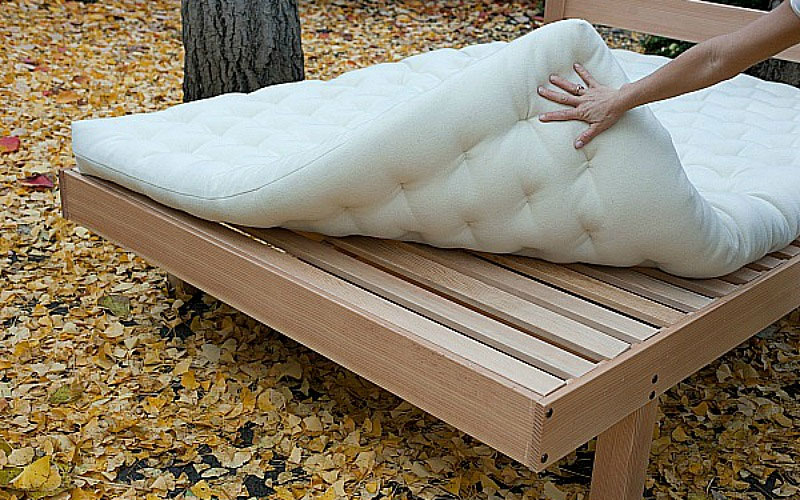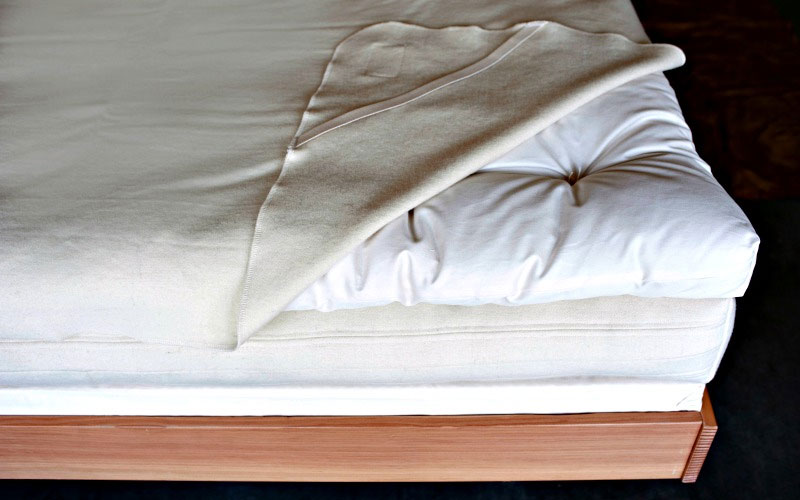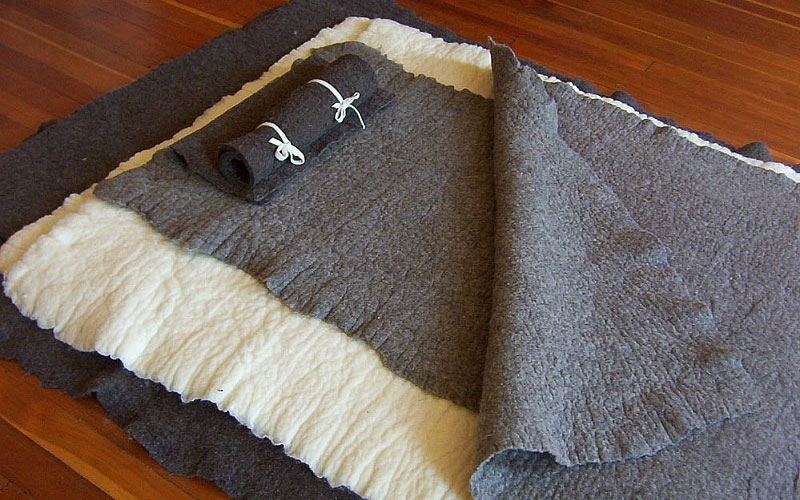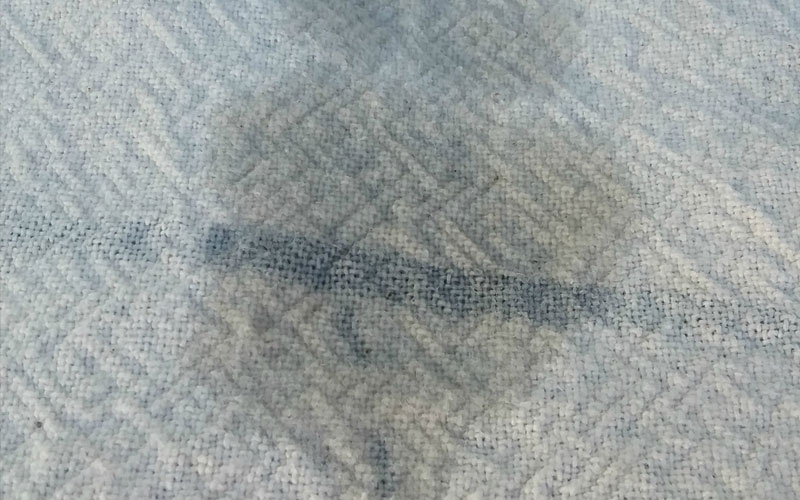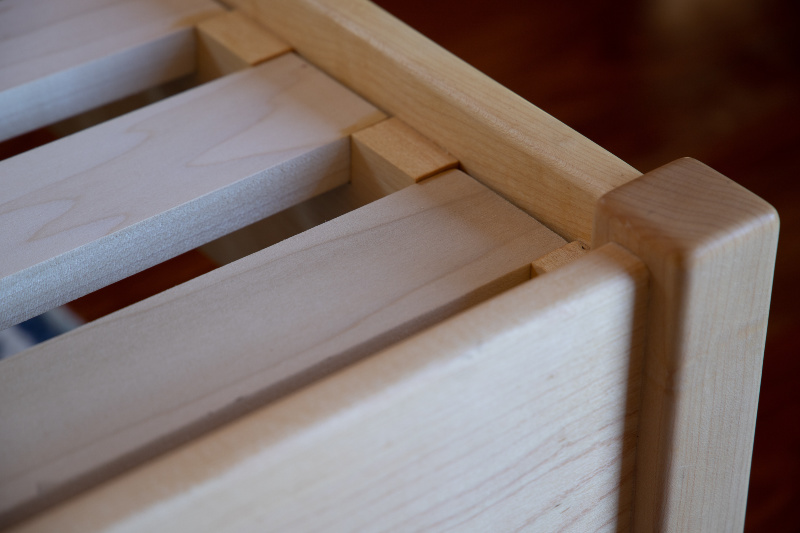How to properly clean your wool mattress, topper, protector and wool felts
Regular wool bedding care is important in order to keep your sleeping surface fresh and to increase its longevity. While some of our products can be washed like normal, please carefully read our advice below before you begin cleaning your wool mattress, topper, protector or wool felt from Shepherd’s Dream.
General Wool Bedding Care Tips
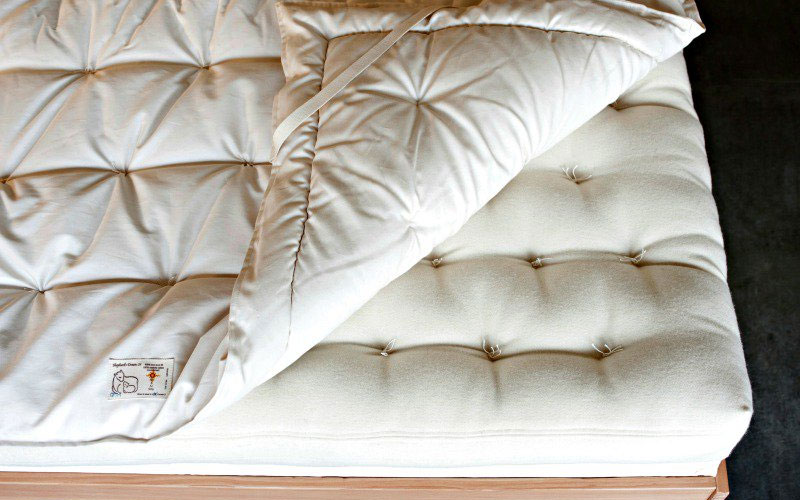
1. Allow your bedding to breathe daily
The easiest way to care for your natural fiber bedding is by leaving your bed unmade every morning. Yes, you read that right – we’re telling you to unmake your bed! In order to let the most active areas of your bedding breathe, pull back the comforter and blankets for at least an hour or two after you wake up.
While you were sleeping, your wool bedding actively wicked away moisture from your skin throughout the night in order to keep you in a comfortable temperature zone. Giving your bedding a daily chance to air out allows it to release that moisture and stay fresh longer.
2. Rotate and fold mattress topper down monthly
Once per month (or whenever you change your sheets), pull your mattress topper down over the foot of your bed. This will allow the middle of your bed to air out and release moisture. This is also a great time to rotate and flip your mattress topper in order to create even compression.
3. Sun and air seasonally
At the start or end of each season, remove all of your wool bedding (other than the mattress, which only needs to be sunned once per year) and place them out in the sun on a clear day. Natural sunlight will deodorize, bleach, disinfect and revitalize your bedding. You can hang the bedding over railings or furniture, hang them out the window, or lay them on a blanket in the yard. If you’re unable to bring your bedding outside, you can place the items near a fireplace, stove or other source of dry heat.
If you live in a particularly humid climate, you can take additional steps to keep your wool bedding clean:
- Use a dehumidifier
- Sun and air bedding more frequently
- Fold all bedding over to allow additional air to reach the bottom of the mattress
- Use a space-heater as a stand-in for sun
- Vacuum your mattress to pull air through the fibers
Wool is incredibly resistant to mold and mildew. Keep an eye on the wooden slats of your frame for early signs of mildew.
Wool Mattress Care
Frame recommendations
Purchasing the correct frame is essential for the comfort and longevity of your mattress. A beautiful Shepherd’s Dream wool mattress deserves a compatible frame. We recommend looking for the following elements in a bed frame:
- Solid wooden slats instead of a box spring or solid platform (both block airflow)
- Slats that are spaced 1.5″ apart to provide the best support. Slats spaced more than 2″ apart may allow the sleeper to feel the spaces between the slats
- Wooden slats that are 2.5″ wide to accommodate the addition of latex strips. Other widths will work for the mattress, but will not accommodate our latex strips
“Breaking-in” a new wool mattress
Each wool mattress is carefully compressed by hand when it’s created, but be aware that a mattress will compress an additional 10-15% during the first 3-6 months of use. Our other wool-filled products, such as pillows and mattress toppers, will compress 30-40%. This is a completely natural process; it doesn’t decrease any of the positive qualities of sleeping with wool.
In order to avoid creating “dips” where you regularly sleep, a few simple precautions can be taken:
- Flip and rotate your bed seasonally.
- Sleep on all parts of your bed. An occasional nap in the center of the bed will help to avoid a “hump” where no one usually sleeps.
- Remember that the compression stops after a few months of regular use. Parts of your bed that are used rarely (edges and the center) will catch up quickly.
If you desire more “give” after compression is complete, you can add another Snuggle Mate topper or pad, latex strips or wool felt.
Mattress size and shape
When we create your handcrafted mattress, we allow no more than a 1″ variation from standard bed dimensions. Be aware that the tight packaging for shipping often causes the mattress to temporarily gain or lose a couple of inches. The mattress will reshape itself naturally once it has had a chance to lay flat for a couple of days.
Also, the mattress will expand slightly as it settles and compresses with use. A mattress can gain 1 to 2 inches in length and width after about 6 months of use.
Continued Mattress Care
Once your mattress is completely compressed, it requires only minimal care. Continue to follow the regular care steps listed above. The mattress will benefit greatly from an annual day in the sun. This is also a great time to rotate and flip your mattress. Vacuum your mattress if it needs additional cleaning.
Wool Mattress Protector Care
Wool should always be washed with care. Frequent washing can strip the fibers of lanolin, removing some of the beneficial properties of wool. Lanolin adds dust-mite and mildew-resistant properties to wool fibers.
Your wool mattress protector can be machine washed. Front-loaders are best, but not necessary. Always use a “delicate” or “woolen” cycle and cold water. Use a mild detergent or one that is formulated for wool such as Eucalan, Kookaburra or Woolite. You can purchase Eucalan detergent, Alpaca dryer balls and other cleaning supplies on our website.
Woolen Bed Felts Care
As with people, wool felt thrives with regular but not constant sun exposure. Since the material naturally neutralizes itself, wool felt can be considered a “self-cleaning” fiber as it releases odors quickly. The best and simplest care instructions for your wool felts is to sun and air them on a regular basis.
However, if you’re determined to clean your wool felt more thoroughly, continue reading for our recommended methods.
The “No Shrink” Wash Method
For the layered felt bed, only the “protection layer” (top layer closest to the body) should require washing. Wash only when necessary. Soiling and dirt washes out of wool easily. To avoid shrinkage, we recommend the method of foot washing on a roll. This is a traditional Persian method of washing wool rugs.
For this cleaning method, you will need:
- PVC plastic pipe – These are easily available at your local hardware or lumber yard. Queen felt requires PVC pipe approximately 7′ long. King felt requires PVC pipe approximately 8′ long. Pipe should be 3″ in diameter.
- Approximately 10-15 gallons of hot, soapy water
- Cotton or wool cloth strips
- Enough space to accommodate your felt with about a foot to spare on either side of the felt
Instructions
- Begin by laying the felt out flat on an outdoor, clean surface, such as a cement pad or driveway. Wet the felt with the warm soapy water, using a garden watering can.
- Roll felt onto the PVC pipe snugly, and secure the roll by tying with cotton or wool cloth strips at 5 locations along the roll, using a half bow for easy release and re-use.
- Use some kind of support bar or several chairs to support you as you stomp along the full length of the rolled up felt with your foot. Stomp every inch of the upper section of felt, back and forth several times, then do a quarter turn and repeat the process until you’ve gone around the whole roll once or twice.
- Use soap free water to rinse the felt. Follow the same method of foot stomping, turning the roll 4 times until the felt has been fully rinsed and stomped.
- Lift one end of the roll to rest on the bar or chair and let it drip dry for an hour or so.
- Unroll the felt to lay flat on a clean surface to dry.
- You can stretch and shape the felt a little while it’s wet.
- The felt should dry quickly. (It feels good to lay on a moist felt. Try it sometime.)
The Bathtub Method
For this cleaning method, all you need is a bathtub, some soap and water, and a little bit of elbow grease.
Instructions
- Fill your tub a few inches deep with slightly soapy, warm water.
- Press wool felt into the water, saturating it completely. Let the felt soak for a half hour.
- Knead and swoosh the felt around to remove the soiling. Drain the tub.
- Fill tub again a few inches deep with non-soapy, clear water for rinsing. Swoosh and knead the felt until the soap is removed. Let the water drain out.
- Leave the felt in the tub to continue draining for another half hour or more. Ring out the water occasionally.
- Pull the felt out of the bathtub when it has dried so that it’s just a little moist. Lay the felt flat on a clean surface (that can handle moisture) and let it finish drying.
- Wool felt dries quickly. While it’s still moist, stretch the felt if necessary to the desired size. There should be very little shrinkage from the starting measurements, if any.
- Voila, clean felt! Finish by sunning and airing if desired.
The Machine Washing Method
To avoid shrinkage, it’s very important to use a short wash cycle and cold water on a delicate setting – using the lowest water level setting. You must use a front loader – NEVER USE A TOP LOADING WASHING MACHINE. Commercial washing machines are most effective.
Find a large front loading washing machine at your local laundromat to accommodate the size of your bed felts. Pack the felt into the machine with some room to spare. If packed too tight, the felting will be less vigorous and less consistent. Too much room will result in more felting, thus more shrinkage.
The felt dries quickly when stretched out flat to dry – ideally in the sun, but indoors is fine too. Stretch or shape the felt while it’s still wet.
With continual use, the new felt will begin to “pill,” which is when tiny balls form on the surface of the felt where there is the most contact. This is unavoidable. Before washing (once or twice a year), take the little pillings off by hand. With each washing, the felt will pill less and less.
Cleaning Up Accidents
Sooner or later, accidents happen. Most wool products can be gently hand-washed when a mishap occurs. Make sure to use cold water (avoid warm/hot water) and to dry the item completely before use. Here are some additional tips depending on the size of the accident:
Small accidents
- Use towels to remove most of the spill.
- Smaller accidents can be spot cleaned with a soft brush and soapy water.
- To remove residual stains, dampen the stained area (using a little lemon juice for additional bleaching) and place in the sun.
Large accidents
- Clean up as much as possible with towels.
- Fill the bathtub or basin with cool/tepid water.
- Add a bit of detergent to the water or directly to the soiled area.
- Submerge the soiled area and swish gently in the water.
- Drain the basin, press water out of the bedding, and repeat as needed. Avoid wringing or twisting the wet wool.
- To remove odors, you can dilute vinegar in water and pour through the soiled area.
- Be sure that the wool is completely dry before using.
Taking Care of Bed Frames
Dust occasionally with a clean soft cloth. Buff with a clean soft cloth to restore sheen as needed. For light cleaning use a slightly damp rag. For more stubborn dirt, try a mild vinegar solution, followed by a damp clear water wipe. Always finish with a dry rag making sure the wood is completely dry.

